English | Dutch |
|
| Back to Portugal | |
Madrid (Spain) to Lisbon (Portugal), June 2016
|
|
| |
|
After we have visited the big cities in Spain, we drive into the vast Extremadura. It is June and it turns out to be an ideal month to visit this area. It is not too hot yet, and the scenery is fortunately not yet fully coloured to yellow. We settle down initially in the national park called Monfraque, one of the best areas in Spain to see the country’s birds of prey. We see all the vultures, as well as some of the spectacular eagles, including the Spanish Imperial Eagle. But the Extremadura is not just nature. Also for the people who love cities and culture, there is plenty to see and do. We visited for example the cities of Plasencia, Caceres and Truijllo, and all of them are worth a visit. From there it is only a short drive to Portugal. We were already in Portugal in April, but mainly to see the Great and Little Bustards in the southern part of the Alentejo, roughly said the area south of Lisbon, with the exception of the Algave (Portugal’s most southern province). This second time we took ample time to also see the rest of the area. Especially around the town of Portalegre we found the landscape beautiful, because this is one of the few areas in the south of the country where the Portuguese have not cut yet all their forests. But it's not much though. The rest of the Alentejo region is mostly barren and dry, especially in the summer months. Large-scale deforestation in the past, coupled with the extremely poor soil, are the main ingredients for the desertification of the area. The deforestation, overgrazing and monocultures 'hardened' the soil and that resulted in the situation that the water cannot infiltrate in the soil anymore. This in turn has the result that there is erosion, so that the upper top layer of the soil (often the most fertile soil) is rinsed away. The end result is that the area is actually useless for farmers, so more and more land isn’t used anymore; and that accelerates the desertification. Mainly because of this, there is less and less work in the region, making young people leave the area for the big cities. The area is becoming more and more a problem area. It is no coincidence that the Alentejo region among the poorest regions in Europe. |
|
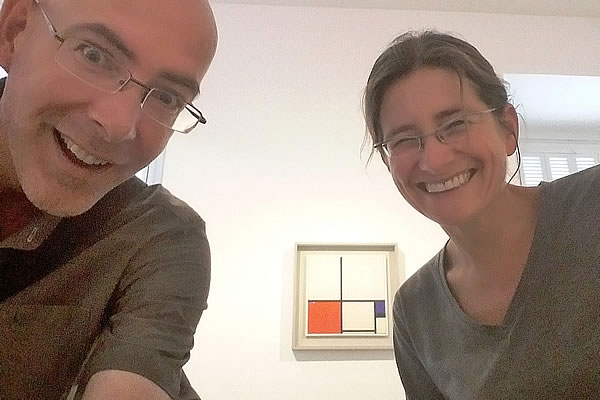 |
|
Selfi in front of a real Mondriaan in the Thyssen Bornemisza Museum in Madrid |
|
We have also been a week in the Algarve. Of course, this area hasn’t much to do with the real Portugal, but it is still a funny place to see how northern Europeans come here to enjoy themselves. The Algarve is not as developed as for example the Costa del Sol in Spain, but you can’t really say that the Algarve is a beautiful area. Of course there are stunning beaches, often surrounded by beautiful rock formations, but the villages and towns in the Algarve are often sad and run-down. This is where the Portuguese live. In the greener areas outside the towns and villages, you’ll find beautiful villas and apartment complexes, mostly owned by northern Europeans (as a second home). The west coast of Portugal, south of the town of Sines is gorgeous. The coastline is a protected area which means that developments are very limited, and this resulted in an area that gives a fairly underdeveloped impression. This coast is blessed with beautiful tiny sandy beaches which can often only be accessed through unpaved paths. This area is a huge magnet for anyone who has anything to do with surfing. |
|
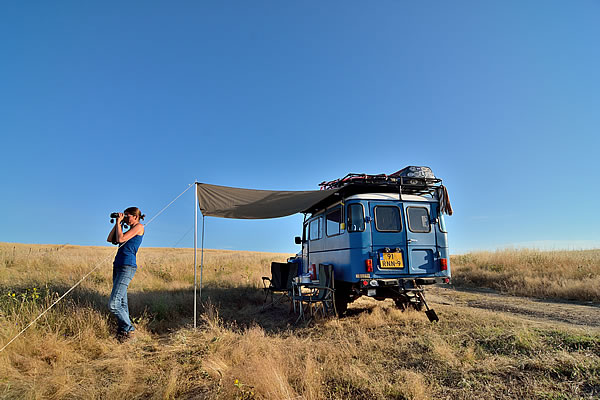 |
|
Birdwatching on the steppe of the Spanish Extremadura |
|
| After almost been a month in the southern part of Portugal, it was time for the big city again, in this case Lisbon. We pitched our tent on the city campsite and explored the area from here. Lisbon is not only a beautiful city, but also a pleasant one. The friendliness and hospitality that characterizes the Portuguese in the countryside, is also reflected in the large cities of the country. Furthermore, Lisbon is above all mainly a Portuguese town. This is in contrast to many other major tourist cities in Europe, which have been changed due to mass tourism. Nearby Sintra on the other hand, is a fully fledged tourist town. It is just half an hour away by train from Lisbon, and has been transformed into a kind of Disney Land. Thousands of people arrive everyday to visit the monastery and the local castle. Only Donald Duck and Mickey Mouse weren’t there, otherwise we should have been sure that we ended up in a theme park. |
|
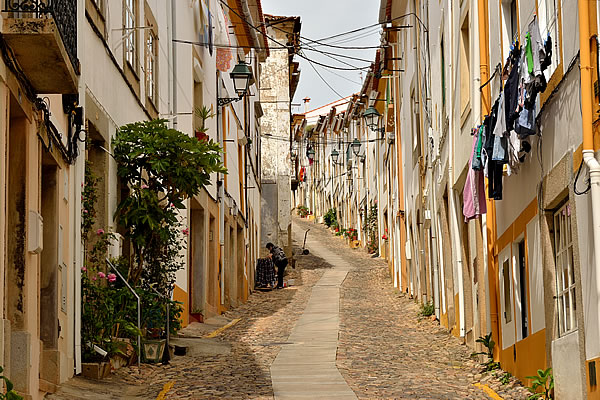 |
|
A typical Portuguese alley in Castelo de Vide |
|
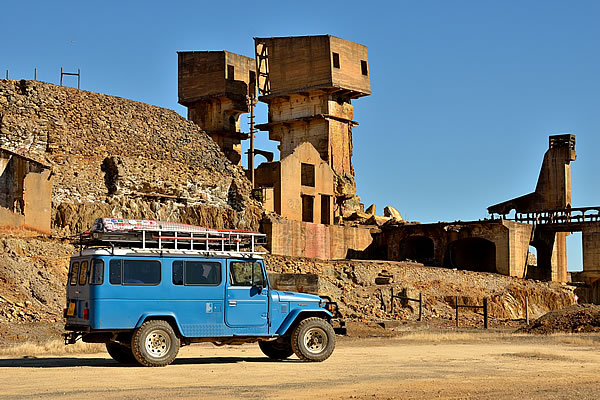 |
|
Mad Max 'landscape' at the former mines of Sao Domingos (Portugal) |
|
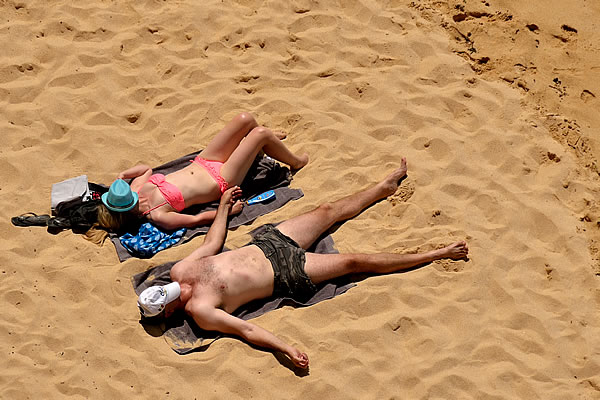 |
|
Beach life on Praia da Marinha in the Algarve |
|
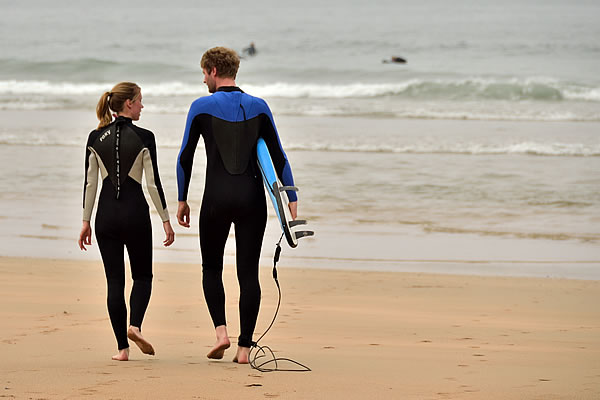 |
|
Surfers on the beach of Arrifana |
|
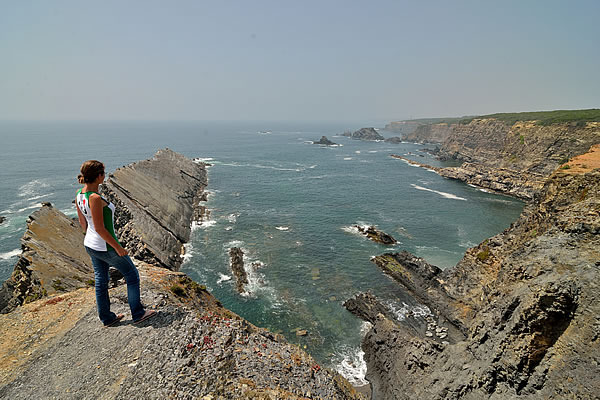 |
|
The rough west coast of Portugal near Zambujeira do Mar |
|
| <Previous weblog> | |